The Baby Food Diet
If you're a parent, you might have been tempted before to dip into your baby's delicious looking carrot and apple breakfast jar. But imagine swapping all of your regular meals for jars of baby food. The idea was that baby food is low in calories and the small jars would help control how much you eat.


But here's the thing: baby food is tailored for, you know, babies – not adults. It's missing a lot of what grown-ups need to stay healthy. People thought they'd found a clever shortcut to weight loss, but in reality, it was more of a fad than a fix.
The Cotton Ball Diet
Yes, the Cotton Ball Diet is as strange as it sounds - it's not a play on words or anything, people actually ate cotton balls in an effor to lose weight. The basic idea was to soak them in juice or smoothies to feel full without actually consuming real food.


Imagine trying to satisfy your hunger with a ball of cotton wool - sounds pretty ridiculous, right? It used to be a common 'diet' amongst ballerinas, who often felt an immense pressure to stay stick thin. Not only was it ineffective for sustainable weight loss, but it also posed serious risks like choking and malnutrition.
The Ear Stapling Diet
The Ear Stapling Diet is definitely one for the history books - and one that should stay put there. It involved having staples placed in a particular part of the ear, similar to acupuncture, supposedly to help control hunger and reduce appetite.


This bizarre practice was not only baseless in its effectiveness but also posed risks of infection and other complications. It's a pretty jarring reminder of how far people will go to lose some pounds - even when it makes little to no sense.
The 'Sleeping Beauty' diet
Imagine trying to sleep away the pounds – well, that was the idea of the 'Sleeping Beauty' Diet. This insane approach to weight loss involved literally sedating yourself for long stretches, with the idea that if you're asleep, you can't eat.


Far from a dreamy solution, it of course posed serious health risks - from medication abuse to completely sidestepping healthy nutrition. It's a weight loss method more suited for a fantasy world than real life - a bit like a bad fairytale.
The Lemonade Diet
This Lemonade Diet basically involved living off a mix of lemon juice, maple syrup, cayenne pepper, and water. That's it – no solid food, nothing else. It promised detoxification and to make the weight just fall off. But what it really did was make people super hungry, not to mention it deprived their body of important and necessary nutrients.
Sure, they likely did see the scale go down, but as soon as they started eating like a normal person again, you guessed it, the weight came right back. This diet was more about starvation than healthy living - and is definitely one best left in the past.
The Russian Air Force diet
Imagine a diet so tough, it sounds straight out of a military manual - that's the Russian Air Force Diet for you. This diet is so called because people thought it comparable to the strict routine soldiers followed in the former Soviet Union. Whether or not it actually was used by the Russian military is up for debate.


What we do know is that the diet is incredibly strict. You're looking at a very low daily calorie intake, and the menu is pretty limited. It's all about discipline and cutting back big time - like a quick march to weight loss, but without much regard for what's healthy or sustainable in the long run.
The Apple Cider Vinegar Diet
The Apple Cider Vinegar Diet might sound like an impossibly quick and easy fix, and that's exactly what it is - too good to be true. The idea of just a quick gulp before meals and watching the pounds drop off sounds appealing, right? But let's get real: it's never that easy.


While apple cider vinegar definitely has some health perks, solely relying on it for weight loss is a bit of a stretch. Plus, think about what all that acid can do to your teeth. It's a diet that's more likely to give you a toothache than a slimmer waist.
The Grapefruit Diet
The Grapefruit Diet was all about eating grapefruit or drinking its juice with every meal. The idea was that this citrus fruit had fat-burning enzymes to help shed pounds quickly. People on this diet had to follow a very low-calorie plan, and grapefruit was the star of the show at each meal.


Sounds pretty sour, right? While grapefruit itself is healthy, basing your entire diet around it wasn't just restrictive, it was lacking in balance. And honestly, even for those who love it, the idea of grapefruit at every meal quickly loses its appeal.
The Five-Bite Diet
The Five-Bite Diet is as simple (and as difficult) as it sounds: you can eat anything, but only five bites of it. Chocolate cake for dinner? Sure, but just five bites. It’s a diet that plays with the tempting idea of treating yourself but with a catch – severe calorie restriction.


The problem? Well, not only were people cutting down calories down to an unhealthy amount, but they often ended up missing out on essential nutrients. Think about it – given the choice of just five bites, would you go for a healthy salad or a slice of your favorite pizza?
The Cabbage Soup Diet
Cabbage, cabbage, and more cabbage – that's the foundation of the Cabbage Soup Diet. The one-week crash a diet dictated that you could eat almost nothing but cabbage soup, day in, day out. The idea was simple yet monotonous: fill up on low-calorie cabbage soup to drop pounds fast.


Yes, it might have slimmed waistlines temporarily, it was not in any way something that could be considered a balanced diet. Lacking in protein, essential fats, and other key nutrients, it was more of a quick fix than a healthy solution. Plus, let's be honest, would you really want to share a bathroom with someone who subsists solely on cabbage soup?
The Negative Calorie Diet
The whole idea of this diet is that you stick to foods believed to burn more calories during digestion than they provide – think lots of fruits and veggies. At first glance, it may seem like a good trick to lose weight fast. But this whole 'negative calorie' thing doesn't really hold up when you look more closely.


Sure, only eating 'negative calorie' foods like celery and apples all day will make you lose weight, but it's dangerously unhealthy. You're essentially starving your body. It's kind of like trying to run your car on fumes instead of fuel - sure, it might move a bit, but eventually, it's going to break down.
The HCG diet
Talking about extreme – the HCG Diet basically combined super low calorie intake with injections of HCG (a hormone produced during pregnancy). The diet promised rapid weight loss, with daily calorie limits shockingly low. Which, as we already know, is not sustainable.


But here's another key issue: the benefits of HCG for weight loss were highly dubious at best. Also, playing with your hormones for weight loss is risky business, as it can lead to unexpected and potentially harmful side effects.
The Cookie Diet
The Cookie Diet – it sounds like every sweet tooth's dream, with the promise that you could munch on cookies all day long and lose weight. These weren't your grandma's cookies, though - they were packed with fiber and protein to keep hunger at bay. But let's face it, subsisting on cookies is unrealistic.


This diet is lacking in a whole lot of what your body needs. Yes, it's a great idea or a snack, but not for a sustainable diet plan. You're better off treating cookies as treats – not the main course.
The Tapeworm Diet
It might sound like the stuff of horror movies but we regret to inform you that, yep, the Tapeworm Diet was a genuine thing. This bizarre method involved swallowing tapeworm eggs, often in a capsule form, with the hope that these parasites would live in their intestines and basically do the consuming for them.


The idea was that you could continue eating as normal because the calories wouldn't end up going to you - but instead, the tapeworms living inside you. Besides being super 'icky', this diet was incredibly dangerous, and as you can probably imagine, led to severe health problems. It goes without saying that this is absolutely not a diet that should be attempted, even for a short while.
The Charcoal Cleanse
Ever thought about detoxing with... charcoal? The Charcoal Cleanse had people consuming activated charcoal, believing it would 'detoxify' their bodies. The theory was that charcoal binds to toxins and helps flush them out. Sounds sciency, so it must work, right?


Well, the issue is that while charcoal is highly absorbent, those properties aren't just selective to toxins - it can also absorb nutrients and medications, doing more harm than good. Plus, let's not forget the risk of constipation or blackened stools. This cleanse is one dark trend that's best left in the past of diet fads.
The Tongue Patch Diet
Now, this one is a true definition of a brutal diet. The Tongue Patch Diet involved sewing a plastic patch onto the tongue, making eating solid food so painful that you'd stick to a liquid diet. It sounds medieval, but it shockingly was a real thing.


As you can imagine, it was painful, risky, and completely ignored the principles of healthy eating and lifestyle. This diet definitely falls into the category of 'painful lengths people will go to for weight loss', and is definitely one that should be left in the past.
The Detox Diet
Detox Diets are all the rage, promising to cleanse your body of toxins and lead to rapid weight loss. These diets usually involve a period of fasting followed by a strict diet of fruits, vegetables, juices or specially mixed shakes.


But these diets are often low in essential nutrients and can lead to muscle loss and decreased metabolic rate. The simple truth is that there is no magic secret to detox, and your body is already equipped with organs like the liver and kidneys to detoxify efficiently itself.
The Breatharian Diet
Hold your breath for this one – the Breatharian Diet claims that you simply can live on sunlight and air alone. Yes, you read that right – no food, no water, just the 'energy' from sunlight and air. Needless to say, this is not only scientifically impossible but super dangerous.


It's based on a total misunderstanding of human biology. This diet is far more a fantasy than a reality - it crosses the line from extreme to absurd. The Breatharian Diet is not an innovative dietary idea, it's one that is super hazardous and should be avoided at all costs.
The Vision Diet
This is a weird one - the main tool for this diet is a pair of blue-tinted glasses. The logic behind it? Well, it was based on the theory that the color blue is the least appetizing color. People following this diet wore these glasses while eating, in the hope that their food would look less appealing, reducing their appetite and meaning they eat less.


This issue here of course is that relying on a color filter to manage eating habits totally overlooks the importance of a balanced diet and a healthy relationship with food. Plus, it made mealtime a strange experience.
The Macrobiotic Diet
The Macrobiotic Diet isn't just your typical weight loss plan - it's more like a whole lifestyle commitment. Plates are supposed to be filled with whole grains, veggies, and beans, with processed foods and most animal products taking a back seat. It's got a healthy ring to it, doesn't it?


But the issue with this diet is that it can be really, really rigid. We're talking strict enough to potentially miss out on important nutrients. Sure, it's about eating clean and living well, but you've really got to know your stuff to keep it balanced.
The Werewolf Diet
This one is also known as the Lunar Diet, and is a howling (pardon the pun) example of bizarre diet trends. It's based on the lunar calendar, where your eating plan changes with the phases of the moon. Full moon? Time to fast! Waxing moon? Watch those carbs!


It sounds pretty odd, almost like some sort of spiritual ritual. But let's be real: the idea that the moon's phases can dictate our weight loss success is definitely more fantasy than science. There is a positive that it provides some sense of structure, but it's not exactly sound as a nutrition plan.
The Ice Cream Cleanse
Imagine telling someone you're on a cleanse and then reaching for a tub of ice cream. That's exactly what the Ice Cream Cleanse entails. This chilly fad had people eating nothing but ice cream to 'detox' their bodies. And it wasn't just about any ice cream, but a specific, expensive brand marketed for detox.


Nutritionally, it's a brain freeze waiting to happen. While indulging in ice cream sounds like a dream, it's far from a balanced diet. The high cost and the specific brand requirement made it clear this was only ever about clever marketing, and not health.
The Ice Diet
The Ice Diet takes 'cooling down' your diet to a literal level. The idea? Chew on ice to burn calories. The basic premise is that the body will burn energy to heat the ice, leading to weight loss. It's an interesting concept, right? But realistically, it's skating on thin ice.


The calorie burn from chewing ice is pretty minimal, and it completely sidesteps the importance of balanced nutrition. This 'diet' idea is more of a potential trick to add to an already healthy diet, instead of a substantial weight-loss strategy. Not to mention, craving ice can be a sign that your body is deficient on a number of important vitamins and minerals - none of which you can get from eating ice.
The Sexy Pineapple Diet
Ah, the Sexy Pineapple Diet - sounds tempting, right? But don’t let the name fool you. It's all about eating – you guessed it – mostly pineapples. This diet promises rapid weight loss and an increase in sex appeal (hence the 'sexy').


But in all honesty: it's just another mono diet that's high in sugar and low in… well, everything else your body needs. Plus, too much pineapple can lead to mouth sores and excessive gas. Not so sexy after all.
The Beverly Hills diet
The Beverly Hills Diet is named for its supposed popularity among the Hollywood elite, but don't let the name fool you. This diet starts off on a lengthy fruit-only phase, then slowly adds other foods in a very specific sequence.


The theory is that this special combination is effective in helping with weight loss and digestion. It might sound like a diet fit for the red carpet, but in reality it’s more like a script for a disaster movie – complicated, restrictive, and without much scientific backing.
The Carnivore Diet
The Carnivore Diet takes meat-loving to a real extreme. This all-meat, all-the-time diet cuts out everything but animal products. Vegetables? Fruits? Grains? They are all off the table. It's a wildly unconventional approach, that completely ignores the usual dietary recommendations.
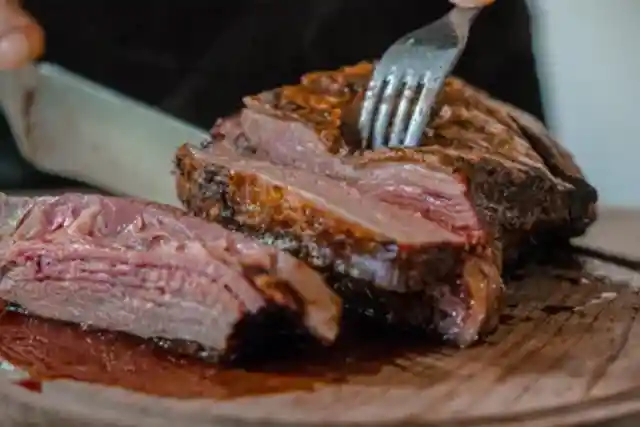
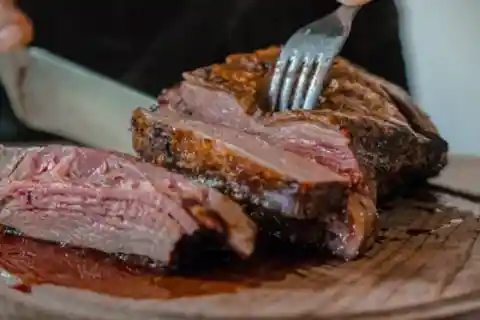
Yes, it's protein-packed, which is great, but it completely misses out on a significant number of healthy nutrients and the benefits of a balanced diet. This diet is more akin to a prehistoric eating pattern with potential implications for long-term wellbeing.
The Lion Diet
The Lion Diet takes the Carnivore Diet to a whole new level. On this diet, you're not just eating any meat - you're exclusively consuming meat from ruminant animals like cows, deer, moose, and sheep. It's like the Carnivore Diet, but stripped down to the absolute basics, mirroring a lion's simplistic and unvaried diet.


While the idea of eating like a lion might sound intriguing, it's a super restrictive path that overlooks the vast array of nutrients found in a well-rounded diet. This approach might sound intriguing for its simplicity and focus, but it's a dietary path that's narrow and unbalanced, and could potentially lead to significant health challenges in the long run.
The Clay Diet
The Clay Diet takes 'eating clean' in a whole different direction – by actually having you eat dirt, well, sort of. The main ingredient is edible clay, like Bentonite or diatomaceous earth, which is stirred into water and then drunk. The theory behind this mixture?


As the indigestible clay travels through your body, it supposedly drags toxins along with it, while also filling up your belly. But let's get real: while the idea of a natural detox sounds appealing, the benefits of eating clay are murky at best.
The Liquid Diet
The Liquid Diet sounds exactly like what it is - you're supposed to get all your calories from liquids. No solid food at all. Think soups, smoothies, and a whole lot of juicing. It might sound clean and simple, but it's actually a 'blend' of problems.


While it’s often used for medical reasons (like preparing for a surgery), using it as a weight loss method is another story. You miss out on the joy of crunching and chewing, and it's a slippery slope to nutrient deficiencies.
The Raw Food Diet
The Raw Food Diet is all about eating everything uncooked. You heard that right – no oven, no microwave, no grill. Just fresh, uncooked, and mostly organic fruits, veggies, nuts, and seeds. The idea is that cooking destroys nutrients and natural enzymes.


Now, this is not entirely untrue, but this diet takes it to the extreme, and it can be challenging to get enough calories and certain nutrients. Building a varied menu of genuinely tasty raw meals isn't the easiest feat, and can sometimes be downright dangerous. Eating raw or incorrectly prepared meat or fish can lead to severe sickness or even death.
The Milk Diet
This diet is basically all milk, all the time. The principle is that it's a simple way to control calories and get nutrients. But let's not 'skim' over the facts – the diet is terribly unbalanced. Relying solely on milk means missing out on a ton of essential nutrients and a variety of food groups.


Oh, and not to mention, the sheer monotony of consuming the same liquid meal day in and day out, with no solid food to chew on. And of course, this one is a no-go diet for the lactose intolerant!
The Soap Diet
Ah, the Soap Diet. No, thankfully, it doesn’t actually involve eating soap (though we wouldn't be massively surprised given some of the truly bizarre diets we've seen on this list). Instead, people lathered themselves with a ‘special’ soap that claimed to break down body fat.


The idea was that you could just scrub your fat away – if only! It sounds like a clean and easy solution, but really it was a bit of false hope. Spoiler alert: no soap can actually wash away the pounds.
The Drinking Man's Diet
Here's one that might sound like a dream come true for some: The Drinking Man's Diet. Essentially, this diet embraced the idea of low-carb, high-protein eating - but with a twist. You could enjoy your steaks, but the real appeal to some was the allowance of alcoholic beverages.


Yes, you heard that right - wine and spirits were on the menu! But as much as it might sound like 'happy hour' filled days, let's face it, replacing balanced meals with booze is definitely not a recipe for health.
The Hallelujah diet
The Hallelujah Diet takes a biblical approach to eating - literally. This diet is heavily plant-based, inspired by the Book of Genesis. The idea was to return to the kind of diet that was supposedly eaten in the Garden of Eden - think loads of raw fruits and vegetables.


While eating your greens is never a bad idea, the diet's restrictive nature and the heavy emphasis on raw foods often results in missing out on essential nutrients. It's more of a leap of faith than a balanced diet plan.
The Kimkins Diet
The Kimkins diet is so controversial, it's almost legendary. It's basically an extremely low-carb, low-calorie, and high-protein diet, but with an alarming aspet: it encouraged near starvation levels of calorie consumption. This diet promised rapid weight loss, but at what cost?


Extreme diets like this can be super dangerous, leading to serious health issues, and not to mention the damaging effects pyschologically of such severe restriction. We'd rate the Kimkins Diet as more of a cautionary tale than a health plan.
Fruitarian diet
The Fruitarian Diet is a bit more diverse than some of the other single-food diets, but it's still quite limited. You're mainly eating fruits, with a scattering of nuts and seeds for variety. Yes, fruits are healthy, but eating them as the bulk of your diet? Not so much.


Doing that can lead to some serious nutritional gaps. Sure, it's a natural and sweet approach, but it's missing out on a wide range of food. And let's be honest, a life without pizza or pasta? That's a hard pass.
The Bean Protocol
The Bean Protocol is - you guessed it - all about beans. Yes, beans of all kinds of varieties - kidney, black, pinto, you name it. The idea is that beans are not only filling but also help in detoxifying the body.
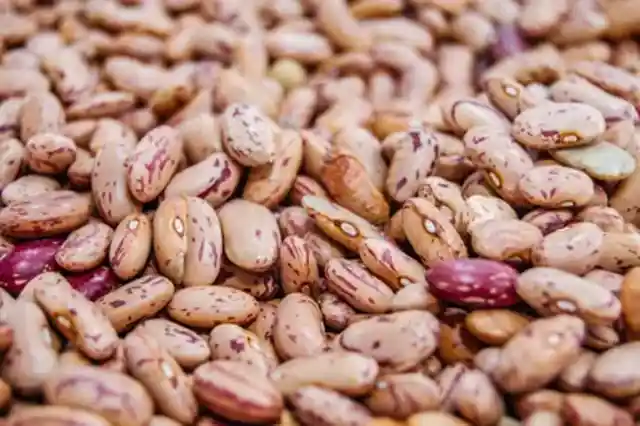
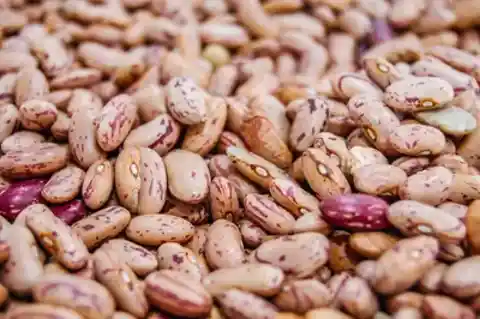
While beans are a great source of fiber and protein, basing an entire diet around them can lead to some... let's say, uncomfortable digestive consequences. Not to mention, it's a bit too simplistic to fully address all of our nutritional needs.
The Egg Diet
Ever heard of putting all your eggs in one basket? Well, the Egg Diet took that literally. The diet is a simple one to follow: eat eggs. Lots of them. The justification being that eggs are low in calories but high in protein, making you feel fuller for longer.


But the catch here is that it's an incredibly monotonous and highly restrictive diet. Not to mention the potential cholesterol spike! And, let's be real, how many boiled eggs can one person eat before - pardon the pun - cracking?
The Bulletproof Diet
The Bulletproof Diet is all about high fat, low carbohydrate intake, and a magical 'Bulletproof Coffee'. This coffee is basically a mix of coffee, butter, and oil, which (if you can drink it without gagging) is supposed to kickstart your day - with the caffeine giving the immediate boost and the fats providing sustained energy release.


Well, the reality is, it's super high in saturated fats and not much else. Yes, it promises quick weight loss and boundless energy, in the long term, it's more likely to leave you feeling weighed down and sluggish rather than feeling bulletproof.
The Fletcherizing Diet
The Fletcherizing Diet, created by Horace Fletcher, recommended chewing food until it turned to liquid before swallowing. The mantra was 'Chew, chew, chew, your food must be liquid, through and through'. Fletcher claimed this would lead to better digestion and less overeating.
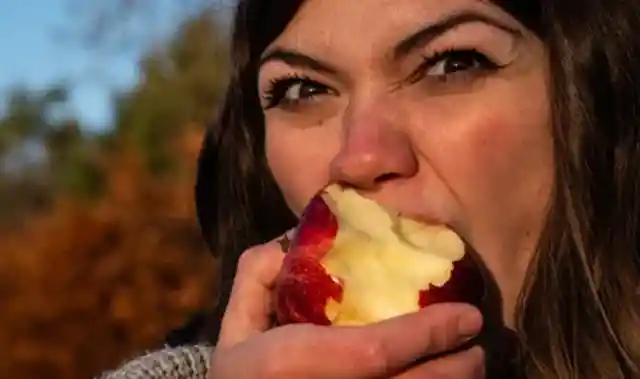
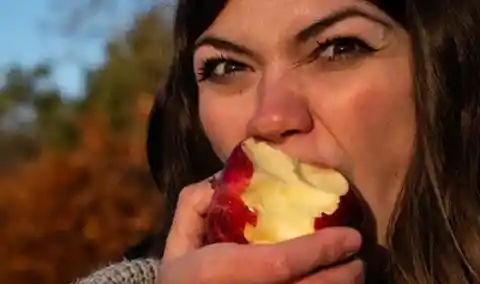
While mindful eating is definitely a good practice, the extreme nature of this method is more likely to tire your jaw out than significantly impact your waistline. Plus, with all that continuous chewing, it likely led to pretty stunted dinner conversations.